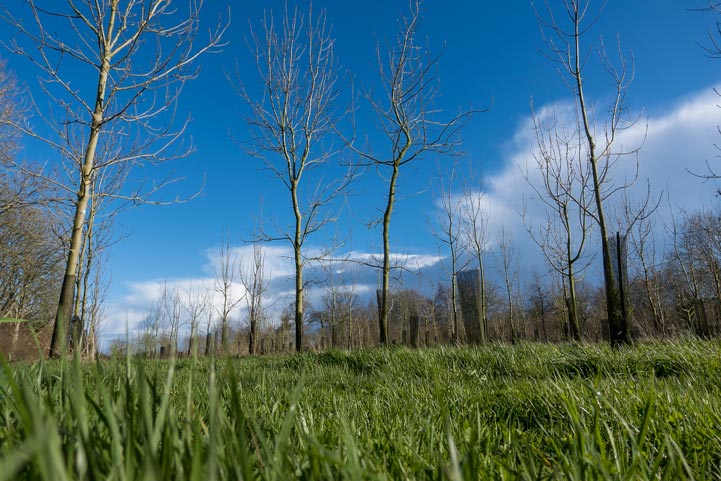How the accreditation system supports woodland creation across the country
Woodland Carbon Code
The Woodland Carbon Code (WCC) provides the standard accreditation system to harness carbon offsetting income to support woodland creation in England, Scotland and Wales.
From October 2022, version 2.2. of the WCC has been applicable to anyone submitting for validation and verification. This changed how additionality is assessed. Additionality is proving that without the added income of the sale of credits, the woodland creation would not have gone ahead. In version 2.2, the test has been simplified, standardised, and changed to ensure that initial expenditure on high-value land cannot be used to justify a project’s additionality. While this may make the process more accessible, woodland carbon remains aligned to less commercial woodland, which many investors see as a missed opportunity.
WCC PROCESS:
1. Register the project on the UK Land Carbon Registry
2. Submit project design document
3. Validation from an independent body within three years of registration, once trees are planted
4. Pending Issuance Units are issued upon validation
5. Verification at year five and then every ten years by an independent body, by submitting a project progress report and monitoring report
6. Woodland Carbon Units issued, or converted from Pending Issuance Units upon verification

PENDING ISSUANCE UNIT (PIU) AND WOODLAND CARBON UNIT (WCU)
One unit is equivalent to one tonne of carbon dioxide sequestered. PIUs are a promise to deliver a WCU in the future, but cannot be used to report against current emissions until verified and converted to a WCU. Bear in mind when selling PIUs that the carbon calculator is a prediction and not a guarantee, but it enables companies to plan to compensate for future UK based emissions as part of the transition to net zero emissions by 2050.
THE VALUE OF CARBON
Carbon can be sold as the trees grow, with the peak sequestration rates between the 25–30-year period when it is estimated that around 60 tonnes per hectare can be sequestered in coniferous forests within that five-year period. A new native woodland can capture between 300–500 tonnes per hectare of carbon over 100 years.
Data is currently limited for verified WCUs, given that only 123 projects have been verified, with 3,500 units sold as of December 2022 (see chart, below). The majority of units are currently sold as PIUs.
According to the WCC, companies are spending on average between £10–£20 per unit. There are reports of higher prices, anecdotally. However, these prices may refer to individual small transactions and, as such, have limited reliability.
Within the woodland carbon guarantee (England only) and ahead of the seventh auction, the government recently set the maximum price it would pay at £30 per unit. However, the use of the guarantee is more suited to smaller-scale parcels, with larger-scale parcels being more in demand to the wider market.
Biodiversity Net Gain
The need for a sustainable approach to planting
What is it?
From November 2023 in England, many developments requiring planning permission will be required to increase the biodiversity that was originally on the site by 10%. This should be done on-site, but where this is not possible developers will be required to look off-site and pay for biodiversity units that improve biodiversity elsewhere.
What is a biodiversity unit?
These are generated through the creation or uplifting of a habitat and are calculated on the size and quality of the habitat.
How can it impact woodland?
Developers are required to offset under the same broad habitat type that has been developed. Therefore, the market for units created from woodlands may not be as large as categories like grassland, given there is generally less development within woodland. Woodland units may be more beneficial for larger-scale infrastructure and utility projects, like railways and pipelines, where developers impact these habitats more often. Under existing policy, it is not possible to create a woodland for carbon and biodiversity. However, it is possible to increase the biodiversity of a woodland already planted under the WCC, provided the baseline for biodiversity is taken once the woodland is established.
Consideration needs to be given to the cost of the initial habitat creation or uplift and also the maintenance over a minimum period of 30 years. Factoring in timber to the biodiversity equation may be difficult as it is not yet clear what protections there will be over an area once the 30 years is over, and as such, it should be clearly stated within the management plan that timber removal is planned. It is worth noting that this is an emerging area, and legislation is still expected over the coming months prior to the November 2023 rollout.
What does a biodiverse woodland look like?
PLANTING RATES
In England, between April 2021 and March 2022, 2,260 hectares were planted, with the government hoping to achieve 7,000 hectares per year by 2024. However, with the launch of the England Woodland Creation Offer in June 2021, we expect to see an increase in planting rates when the next set of data is published in September.
The UK government’s commitment is to reach 30,000 hectares of new planting per year from May 2024. This may seem ambitious, but it was achieved during the 1980s, when tax incentives drove afforestation (see chart, below), but with little consideration to the “right tree for the right place”. New standards prevent this now, but the clamour to meet targets cannot outweigh the necessity for a sustainable and effective planting strategy. It is crucial that investors and land managers adopt a long-term, balanced approach to planting.
ARE ENGLAND’S LANDOWNERS MAXIMISING TREE COVER?
Friends of the Earth analysed the largest landowners by acreage in England and their tree coverage in order to assess which were above or below the English national average of 10% tree cover. Interestingly, eight out of ten were above 10%; however, six out of ten were below the UK average of 13%, so there are opportunities in those areas for additional planting.
BARRIERS TO WOODLAND CREATION
Savills undertook a survey of landowners’ motivations and reservations in planting woodland on their farm. The key drivers were biodiversity, carbon storage and landscape amenity, while the main barriers were available land, available finance and the change in land value.
The key drivers in woodland creation are biodiversity, carbon storage and landscape amenity
Nicola Buckingham, Associate Director, Rural Research
More generally, when reviewing the factors in groups, the main drivers for afforestation are social and environmental, while the main barriers are economic. Available land was the largest concern, made more significant by the permanence of any land use change. When landowners were asked which areas of their holding they would be content to allocate to tree planting, the average “spare land” volunteered was just 6.5% of the holding.
Read the articles within The Forestry Market – 2023 below.
.jpg)
